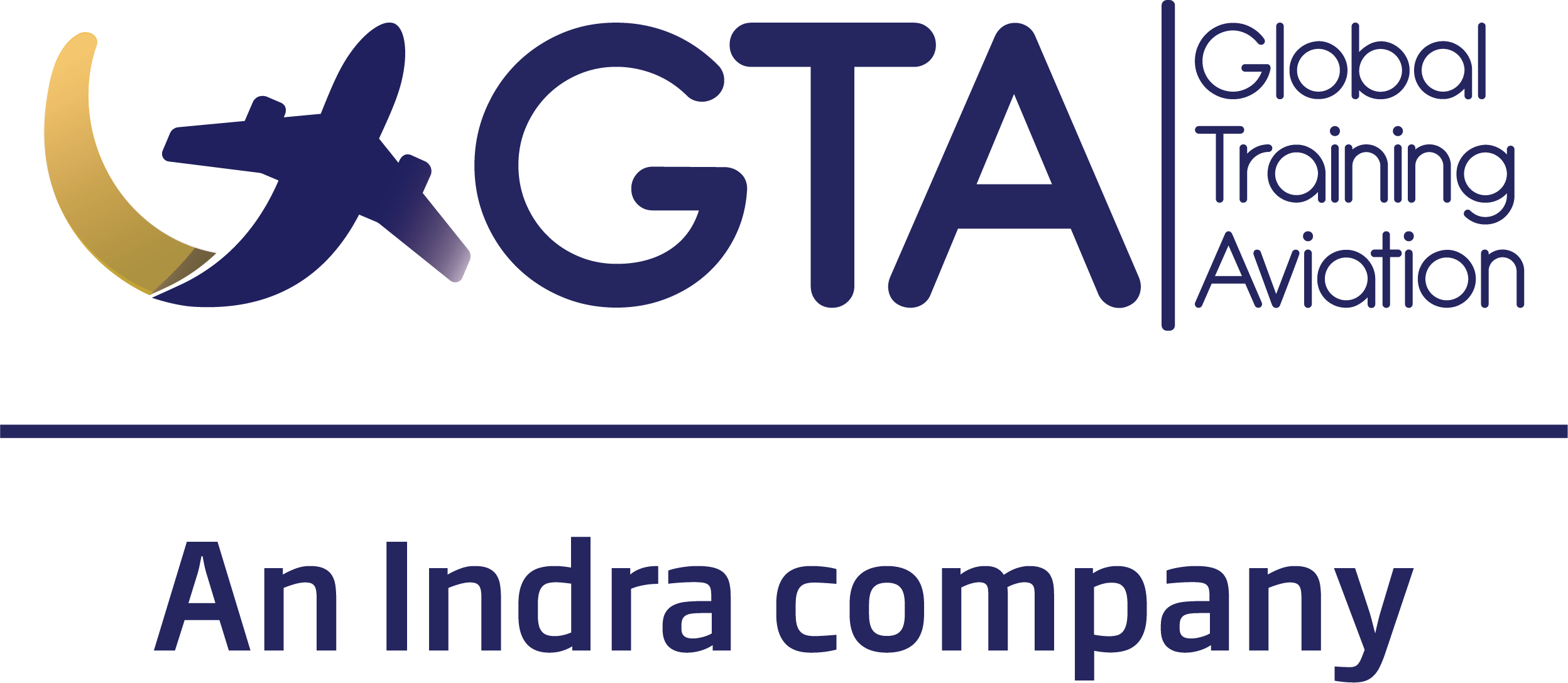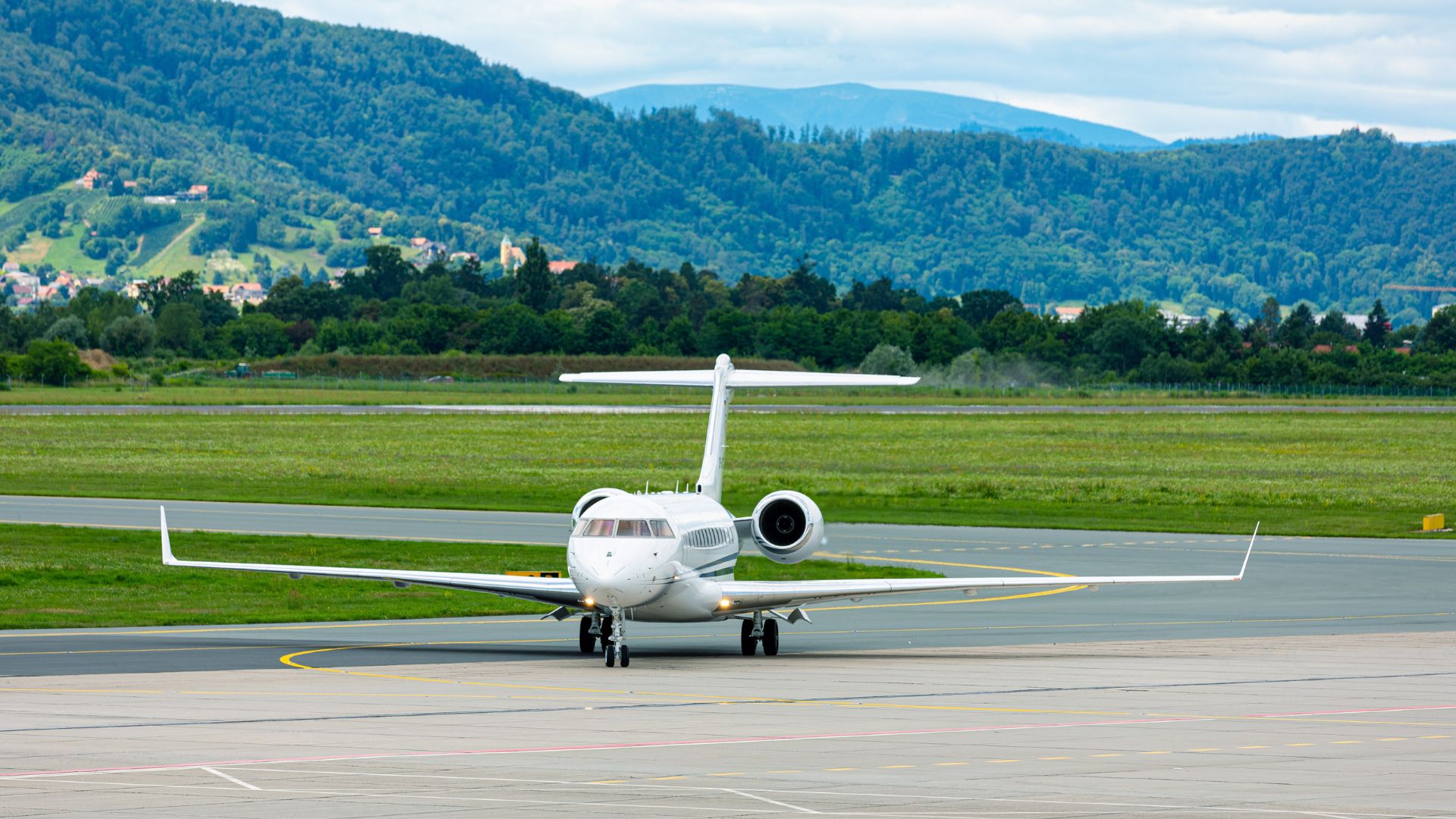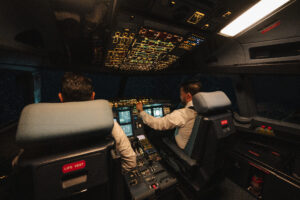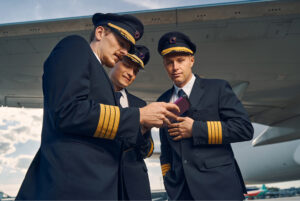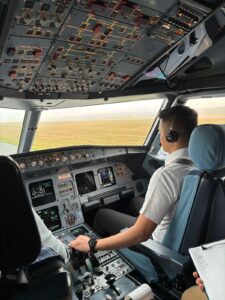At Global Training Aviation (GTA), we are committed to supporting pilots throughout their professional journey, especially when taking their Type Rating Course, a crucial certification that allows them to operate specific aircraft models. The final stage of this training, known as Base Training, is where pilots transition from simulators to actual flight operations, refining their skills with real takeoffs, landings, and go-arounds. Understanding and mastering these flight maneuvers is essential for safe and efficient operations, and at GTA, we ensure that pilots are well-equipped to handle them confidently. Let’s explore each of these crucial phases in detail.
The Importance of a Proficient Takeoff
A successful takeoff is the foundation of a safe flight. It requires precision, coordination, and adherence to standard procedures to ensure the aircraft reaches a stable climb safely. During our training programs at GTA, we emphasize the following aspects:
- Pre-Takeoff Preparations: A thorough pre-flight checklist is mandatory to verify that all systems are operational. This includes engine checks, flight control tests, and briefing with the crew on expected flight conditions.
- Power Management: Pilots must apply the correct amount of thrust to achieve the necessary speed for liftoff. Depending on factors such as aircraft weight, weather conditions, and runway length, proper power settings must be adjusted.
- Directional Control: Ensuring alignment with the runway centerline is crucial. Pilots are trained to use rudder inputs effectively to compensate for crosswinds and maintain stability during acceleration.
- Rotation and Climb: At the designated rotation speed (Vr), the pilot smoothly pulls back on the control column to initiate lift-off. The aircraft is then guided into a positive climb while retracting landing gear and flaps at the appropriate intervals.
At GTA, these principles are reinforced through both simulator sessions and actual flight practice, ensuring that pilots develop muscle memory and situational awareness.
Perfecting the Landing Phase
Landing is often regarded as the most challenging phase of flight due to the numerous variables involved. A smooth landing requires precision, control, and correct energy management. Our training at GTA focuses on:
- Approach Planning: A stable approach is key to a successful landing. Pilots are trained to maintain the correct glide slope, airspeed, and descent rate while aligning with the runway.
- Flare Technique: Just before touchdown, the pilot executes a flare maneuver by slightly pulling back on the controls to reduce the descent rate. This allows for a smooth and controlled touchdown.
- Crosswind Handling: Pilots are trained to use the crab or sideslip techniques to manage crosswinds, ensuring that the aircraft maintains runway alignment during touchdown.
- Touchdown and Rollout: Proper touchdown techniques are crucial for a safe deceleration. The use of reverse thrust, spoilers, and brakes ensures that the aircraft slows down effectively and safely exits the runway.
Executing a Go-Around: Safety First
A go-around is a maneuver performed when a safe landing cannot be achieved. This decision must be made promptly and executed smoothly to avoid unstable approaches or potential hazards. Key aspects include:
- Situational Awareness: Pilots must quickly assess when a landing should be aborted, whether due to traffic congestion, sudden weather changes, or unstable approach parameters.
- Procedure Execution: The correct sequence involves applying full power, adjusting pitch to initiate a climb, retracting the landing gear, and configuring the aircraft for a safe ascent.
- Communication: The pilot must inform air traffic control and the flight crew about the decision to go around, ensuring coordination for the next approach.
- Stabilization: Once a safe altitude is reached, the pilot prepares for another approach or diverts to an alternate airport if necessary.
According to aviation safety guidelines, go-arounds can occur at any stage from the final approach fix to just before touchdown, reinforcing the need for pilots to be well-trained in this maneuver.
Base Training: The Final Step in Type Rating
At Global Training Aviation, we specialize in guiding pilots through their Type Rating certification, ensuring they are fully prepared for real-world operations. The final component of this training is Base Training, where pilots perform takeoffs, landings, and go-arounds in an actual aircraft under instructor supervision.
Depending on regulatory requirements and a pilot’s prior experience, Base Training typically includes one of the following structures:
- Four takeoffs, landings, and a go-around (for experienced pilots transitioning to a new type).
- Six takeoffs, landings, and a go-around (for pilots with less experience on the specific aircraft type).
- Zero Flight Time Training (ZFTT): For eligible pilots with extensive experience, the entire Type Rating, including takeoffs and landings, can be completed solely in the simulator without additional aircraft-based training.
At GTA, we provide cutting-edge full-flight simulators that replicate real-world conditions, enabling pilots to gain valuable experience before their first operational flight. Our instructors ensure that pilots demonstrate the required proficiency before transitioning to line operations.
Why Choose GTA for Your Flight Training?
Global Training Aviation is dedicated to shaping highly skilled pilots who are confident in their abilities and equipped to handle complex flight operations. Our comprehensive training programs include:
- State-of-the-art simulators with realistic flight dynamics.
- Experienced instructors with real-world airline experience.
- Personalized training paths tailored to meet individual pilot needs.
- Strict adherence to international aviation standards ensuring the highest safety levels.
By mastering takeoffs, landings, and go-arounds at Global Training Aviation, pilots are prepared to navigate any situation they may encounter in real flight operations. Whether transitioning to a new aircraft type or refining critical flight skills, GTA provides the expertise, technology, and training excellence to ensure success.
Are you ready to elevate your aviation career? Contact us today to learn more about our Type Rating and Base Training programs!
